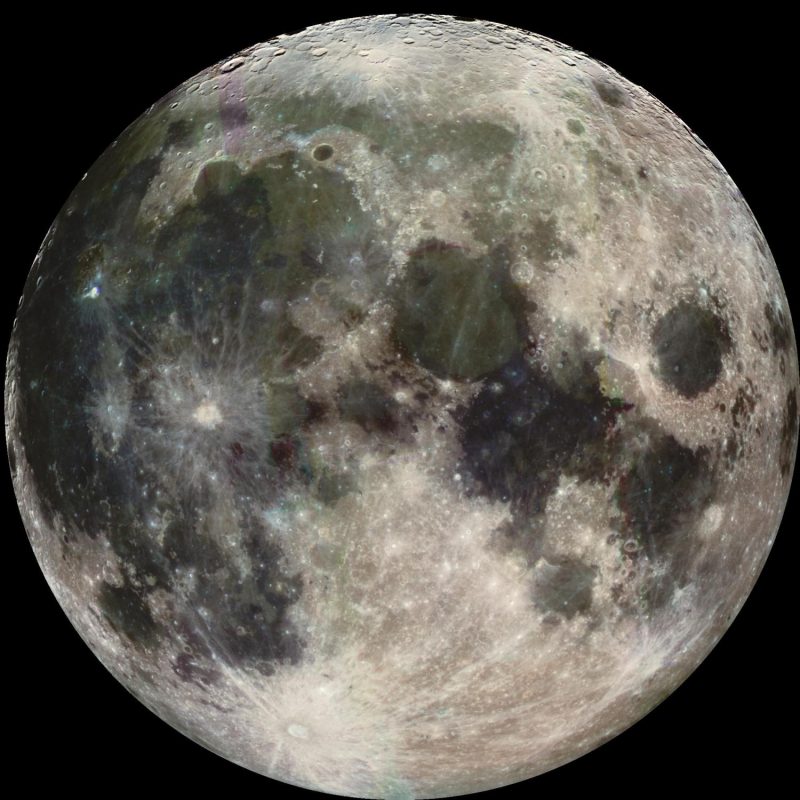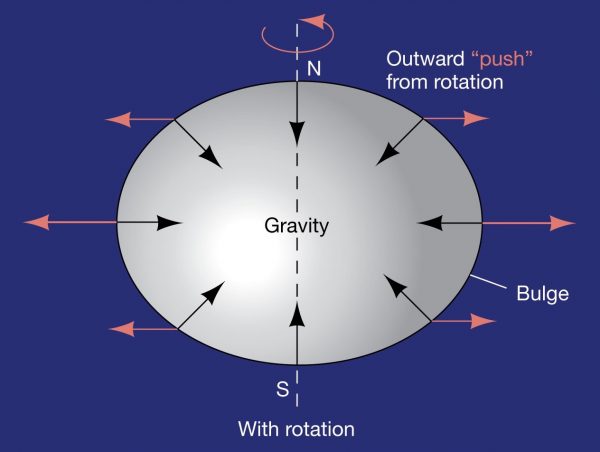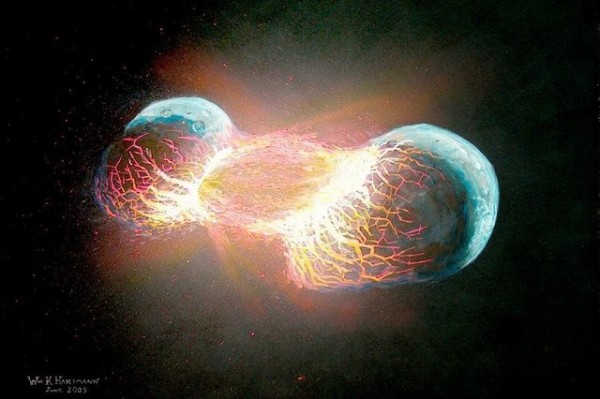
Reflectors placed on the moon during manned moon missions have let earthly astronomers accurately measure the moon’s distance. That’s how we know that – today – the moon’s distance from Earth is increasing at a rate of about 1.6 inches (4 cm) per year. What we haven’t known with any accuracy is how fast the moon was retreating long ago. Now researchers have announced results of new dynamic model – a computer simulation over time – based on the current size of the moon’s equatorial bulge. The model sets parameters on how fast or slowly the moon was receding from Earth, billions of years ago. It has implications for what the Earth, moon and other solar system bodies were like early in the history of our solar system.
The study was published online on February 2, 2018, in the American Geophysical Union’s peer-reviewed journal Geophysical Research Letters. Theoretical geophysicist Chuan Qin, formerly of University of Colorado, Boulder (UC Boulder), now at Harvard, led the study.
The Earth and other planets in our solar system are thought to have formed from a cloud of dust and gas orbiting the young sun, four-and-a-half billion years ago. The most widely accepted theory nowadays regarding the moon’s birth suggest it formed some millions of years after the Earth, when a Mars-sized body – known today as Theia – collided with the Earth and cast vaporized chunks of our planet’s forming crust into space.
Bodies that spin in space (and all moons and planets do spin) tend to flatten out at their mid-sections. Earth, for example, is wider at its equator than from pole to pole, because of our world’s spin.

But, as early as 200 years ago, the French mathematician and physicist Pierre-Simon Laplace realized that the moon’s equatorial bulge was 20 times larger than could be explained by rotation alone.
How did the moon get such a large equatorial bulge? A statement from UC Boulder explained:
Scientists have theorized that the moon, born hot, rotated fast after its formation and possessed an equatorial bulge much greater in size than it does today. The bulge tended to shrink [as the moon spun more slowly and] as the moon moved farther from the Earth … until the moon cooled and stiffened enough to have solidified a permanent bulge in its crust …
Thus these researchers refer to the solidified, current equatorial bulge on the moon as a fossil bulge. They said that, prior to their new work, scientists didn’t know how fast the moon’s bulge formed. Their work shows that the process wasn’t sudden but:
… rather quite slow, lasting several hundred million years as the moon moved away from the Earth during the Hadean time or around 4 billion years ago.
According to these scientists, this is the first time that anyone has been able to put timescale constraints on early lunar recession.

Plus the new computer model – based on the moon’s equatorial bulge – has implications for Earth’s hydrosphere, the total amount of water in Earth’s early ocean, under its surface and in the air.
It suggests Earth’s hydrosphere might have been frozen during the time of the moon’s formation.
That idea supports another perplexity in Earth science, what’s called the faint young sun paradox. That is, astrophysical theory suggests the early sun should have been only about 70 percent as bright in the early history of the solar system as it is today, leading to a snowball Earth. Meanwhile, geologic evidence suggests that liquid water existed on Earth during that same time, and so geologists debate the idea and wonder if there might have been more than one snowball Earth episode. Qin and Zhong’s model supports the idea of a snowball Earth during the time of the moon’s formation. Zhong said:
Earth’s hydrosphere, if it even existed at the Hadean time, may have been frozen all the way down …
Thus, according to the study’s co-author Shijie Zhong of UC Boulder:
The moon’s fossil bulge may contain secrets of Earth’s early evolution that were not recorded anywhere else.
The researchers say they plan to continue optimizing their model and will attempt to fill in other knowledge gaps about the moon and Earth’s early days between 3.8 and 4.5 billion years ago.
Interesting, yes? Before you go, check out the video below, which might surprise you by illustrating the relative distance between the Earth and moon today.
Bottom line: A new dynamic computer model based on the current size of the moon’s equatorial bulge sets parameters on the rate of the moon’s recession from Earth billions of years ago. It has implications for what the Earth, moon and other solar system bodies were like in the early history of the solar system.
Source: Formation of the Lunar Fossil Bulges and Its Implication for the Early Earth and Moon











